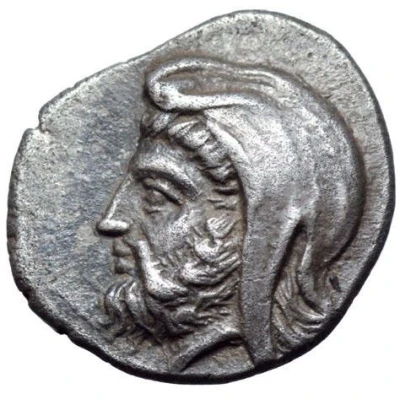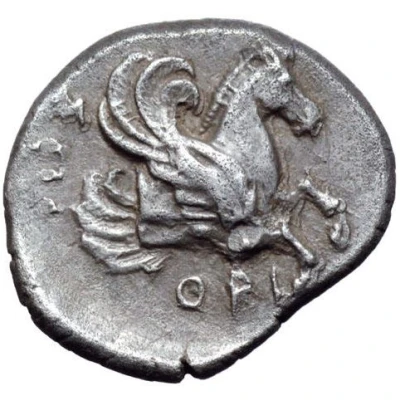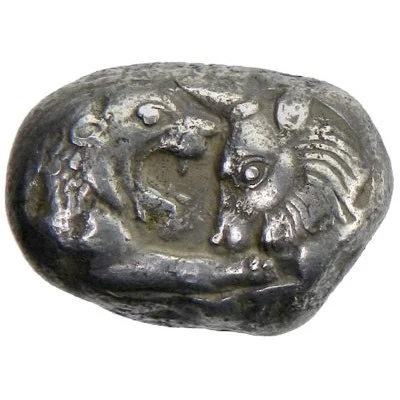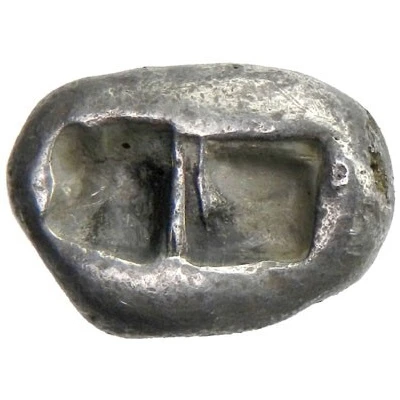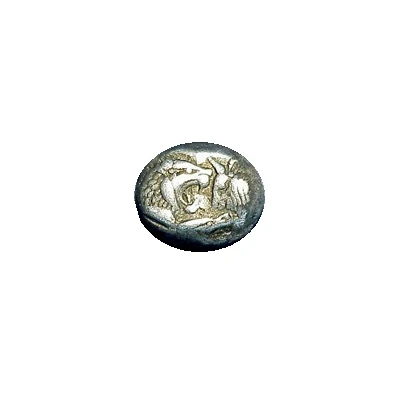
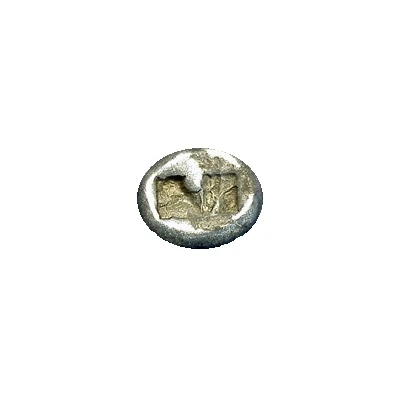

½ Stater - temp. Cyrus the Great "Cyrus II of Persia" 548 BC - 515 BC
| Silver | 5.44 g | 16.2 mm |
| Issuer | Satrapy of Lydia (Achaemenid Satrapies) |
|---|---|
| King | Cyrus II the Great (560 BC - 530 BC) |
| Type | Standard circulation coin |
| Years | 548 BC - 515 BC |
| Value | ½ Silver Stater (1) |
| Currency | Drachm (550-330 BCE) |
| Composition | Silver |
| Weight | 5.44 g |
| Diameter | 16.2 mm |
| Shape | Round (irregular) |
| Demonetized | Yes |
| Updated | 2024-10-10 |
| Numista | N#70798 |
|---|---|
| Rarity index | 93% |
Reverse
Two square incuse punches of unequal size
Comment
The types of the Lydian king were continued by the Persians until c. 515 BC when the first of the running king sigloi were issued.Notes from Phil Jones on June 10, 2009: "The Achaemenids took the over the Lydian Kingdom and continue the coinage of Kroisos for approximately 30 years after the death of the Lydian King.
Stylistically, nearly the same dies are used, however there are small variations, particularly around the bull. As well, the post Croesan coinage tends to not strike the legs well, though I cannot tell you why this is the case honestly... Kraay notes that "these post-Croesan issues are characterized by a progressive stylization of their types, and by the almost total omission of fractional denominations smaller than the gold stater and the silver half stater, which remained the only normal denomination in the succeeding Persian coinage." He continues to suggest later on that "...this concentration upon two major denominations would seem to imply some restriction in the range of transactions for which coinage was being employed in the less properous climate of the secon half of the century." Perhaps there is less dedication or less focus that comes to the mint in Sardis at this time as well, as the Persians really don't have much of a history with the concept of stater directly (though arguments can be made that they do bring with them the concept of state issued precious metals (Kraros) from the Babylonian tradition (For further information, see Morris Silver's wonderful discussion of pre-coinage and early economies posted on line: http://members.tripod.com/~sondmor/index-7.html))."
Interesting fact
One interesting fact about this coin is that it features an image of Cyrus the Great, who was the founder of the Achaemenid Empire, on one side, and an image of a lion on the other side. This coin was minted during his reign, which lasted from 559 BC to 530 BC, and it was used as a form of currency throughout the empire. The lion was a symbol of power and strength in ancient Persia, and it was often depicted on coins and other artifacts from that time period.
